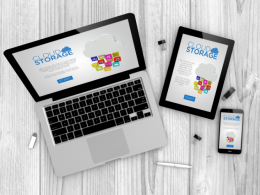More than 20 years ago, Joella Hogan started her Indigenous firm, Yukon Soaps Company in Canada. With this venture, she thought of combining her passion for getting in touch with the people from her community, elders, her language, with the world. She asked elders and children to collect rose petals and juniper berries for producing her soaps. Most of her products are taken by tourists as Yukon souvenirs.
Like Hogan, there are numerous other examples of successful Indigenous people who tried to make it big as an entrepreneur. Today, Indigenous people are coming up with new businesses at a rate of five times more than the non-Indigenous communities. And these businesses are already worth billions. As per a report by Statistics Canada, there are more than 19,000 businesses that are located in the Indigenous communities, which generates more than $10 billion as yearly revenues together. Apart from generating revenues for their owners, the Indigenous-led businesses have a huge impact on the community by providing them with essential goods and services, along with creating several jobs. Today, at least one in three Indigenous businesses in Canada have created employment for the common people.
Indigenous Businesses Impacting the Local Communities
Indigenous businesses are actually motivated by their revenue. However, they also love the fact that they have a kind of environmental footprint and an impact on the local communities. Several women Indigenous entrepreneurs identify themselves as ‘creators’. They see their company as a creative outlet and a way of meeting the requirements of their communities. A lot of these women entrepreneurs make use of “traditional knowledge or cultural expressions in their business”. Also, a lot of them are innovators and exporters of new services, products, and processes.
Like several other small-scale businesses in Canada, even the Indigenous businesses were heavily impacted by the global pandemic. They faced huge disruptions in their supply chain management, with a dip in revenues, and an increase in the need for working capital for covering their overall operations costs. Businesses in industries like retail, tourism, and resource supply chain were hit badly by Covid-19. The shutdown of several casinos also eliminated a vital source of revenue and employment for a lot of First Nation communities.

The Indigenous business communities are already in an economically disadvantaged position. They face unique challenges almost every single day. And all of these obstacles have hindered their growth, and they have found it pretty difficult to sell their products and services to the global marketplaces.
Key Challenges Faced by the Indigenous Businesses in Canada
Here is a gist of the challenges that most of the Indigenous businesses in Canada are facing due to global disruptions related to the pandemic.
· Poor Access to Working Capital
This is the major issue for most of the Indigenous businesses in Canada. Most of them do not have a good relationship with the traditional banks. Also, they often face institutional bias as they are often seen as a higher risk. These businesses often lack the collateral that is needed to get loans and credits. Even though some of them have assets, it gets tough to secure a loan through them.
· Remoteness of Communities
Be it in Nunavut, Northern Ontario, Labrador, or the Northwest Territories, the remote location of the Indigenous businesses often creates several problems. Sometimes it gets tough to ship goods. It is also logistically difficult to ship goods if there are no proper roads, highways, or airports nearby. Even without a reliable network connection and proper internet services, staying connected gets difficult. Making communication with suppliers, customers, and financial institutions is often troublesome.

· Deprived Socioeconomic Status
Most of the Indigenous entrepreneurs aren’t well-educated. Their education level is lower than the average Canadians, with just a few having university degrees. The Indigenous Peoples account for around 30% of Canada’s federal prison population. Also, of all the women incarcerated federally, around 42% are Indigenous. Ironically, the small Indigenous businesses are generally run and owned by women. On average, the Indigenous entrepreneurs have lesser financial resources and have a small base of assets for collateral as compared to the non-Indigenous businesses. This makes it hard for Indigenous businesses to access the working capital needed for growth and sustainment.
Conclusion
Keeping every single aspect listed above in mind, and in response to the global pandemic, the First Peoples Economic Growth Fund (FPEGF) is striving to deliver the Emergency Loan Program to the Indigenous businesses in Canada. This is termed the Indigenous Business Stabilization Program (IBSP) and is given on behalf of the Government of Canada. FPEGF has approved a little more than $2.0 million for the businesses that were severely impacted by Covid-19.
Additionally, when the pandemic first hit, FPEGF deferred all the loan payments for 6 months. Also, the company extended loan payment deferrals to some of their clients who wanted additional assistance for survival. FPEGF plans on continuing its work with its local clients to help them in whichever way they can. They will also monitor new recovery programs that may arrive unannounced in the future.
In case you have any queries related to FPEGF loan referrals, consult with your Loans Account Manager at FPEGF and get all your questions answered.
To know more about Indigenous businesses and small and medium-sized businesses in Canada, do not forget to subscribe to our monthly CanadianSME Small Business Magazine.







